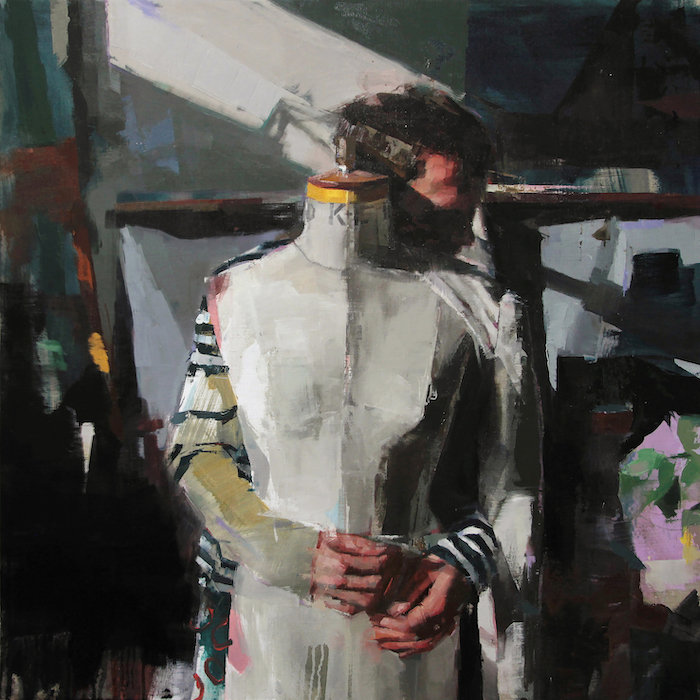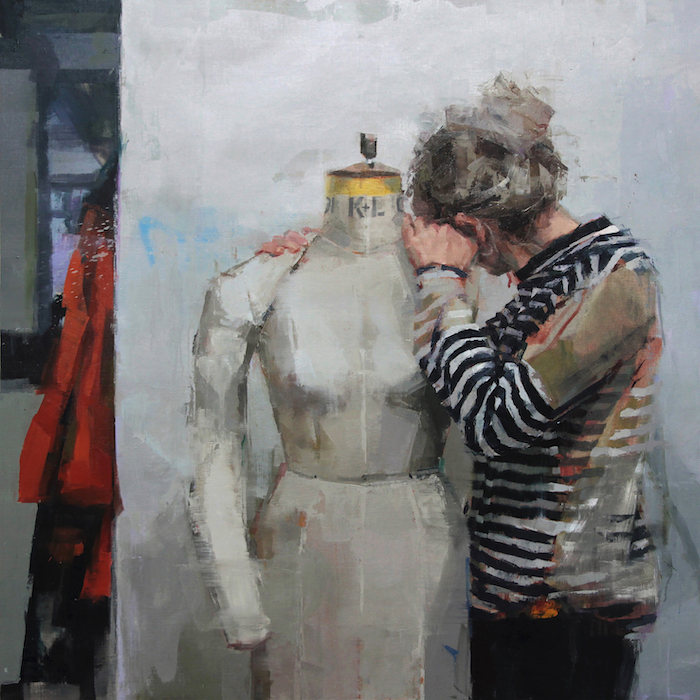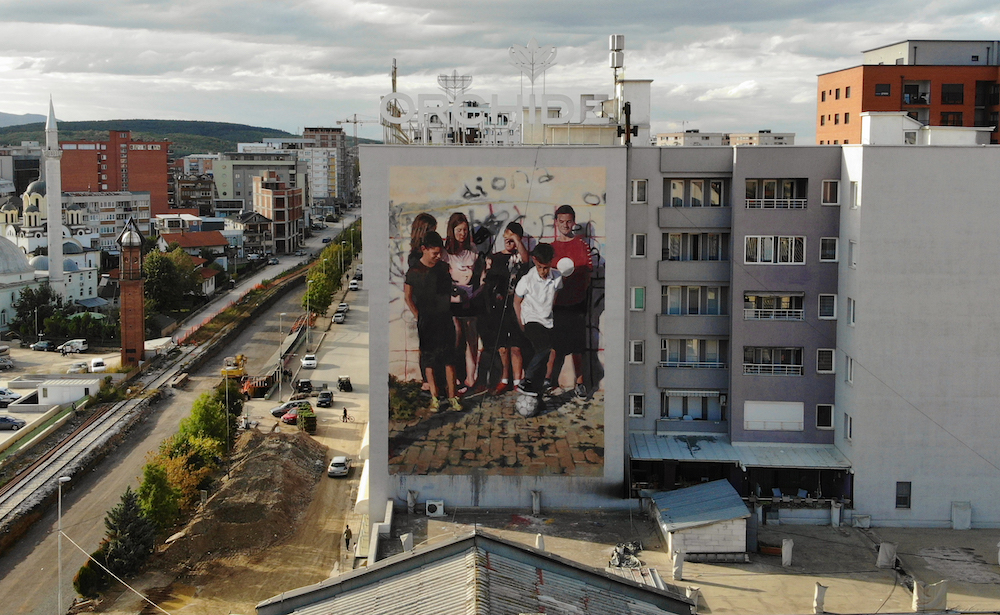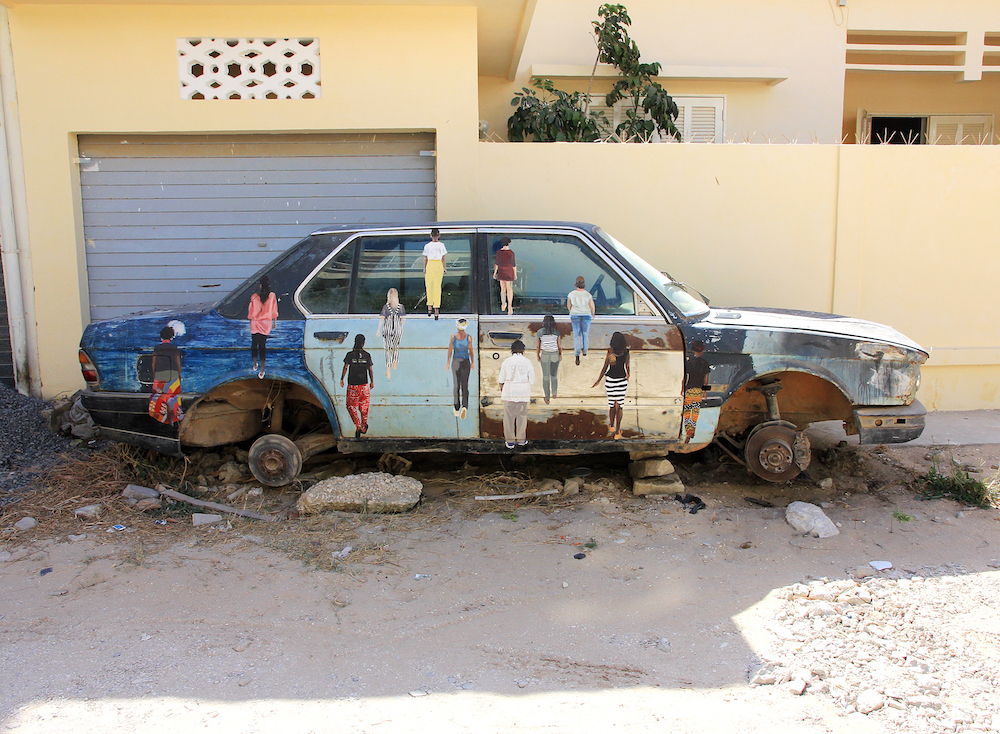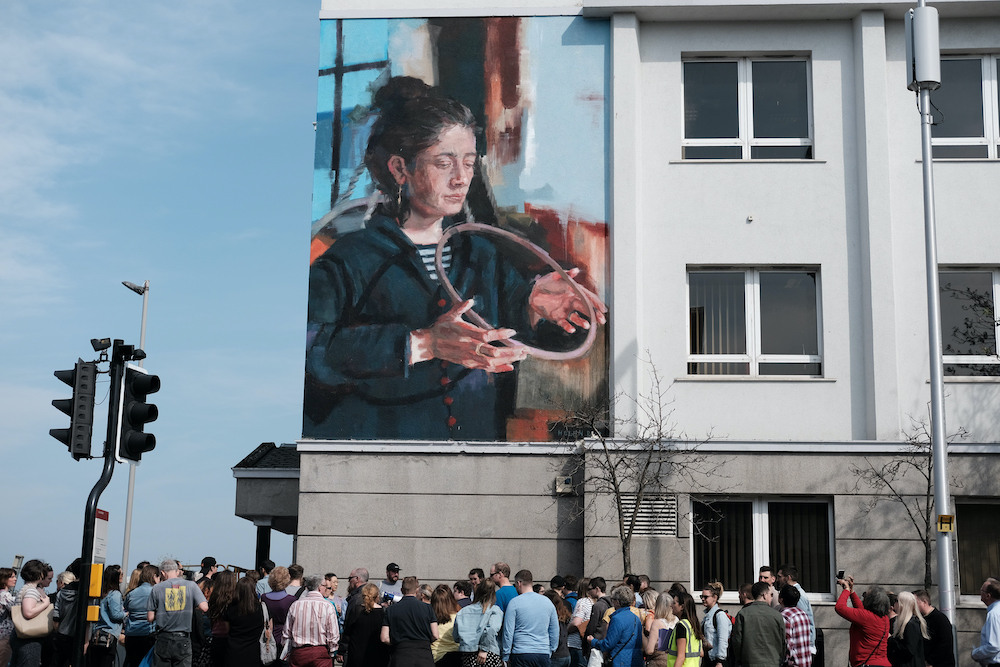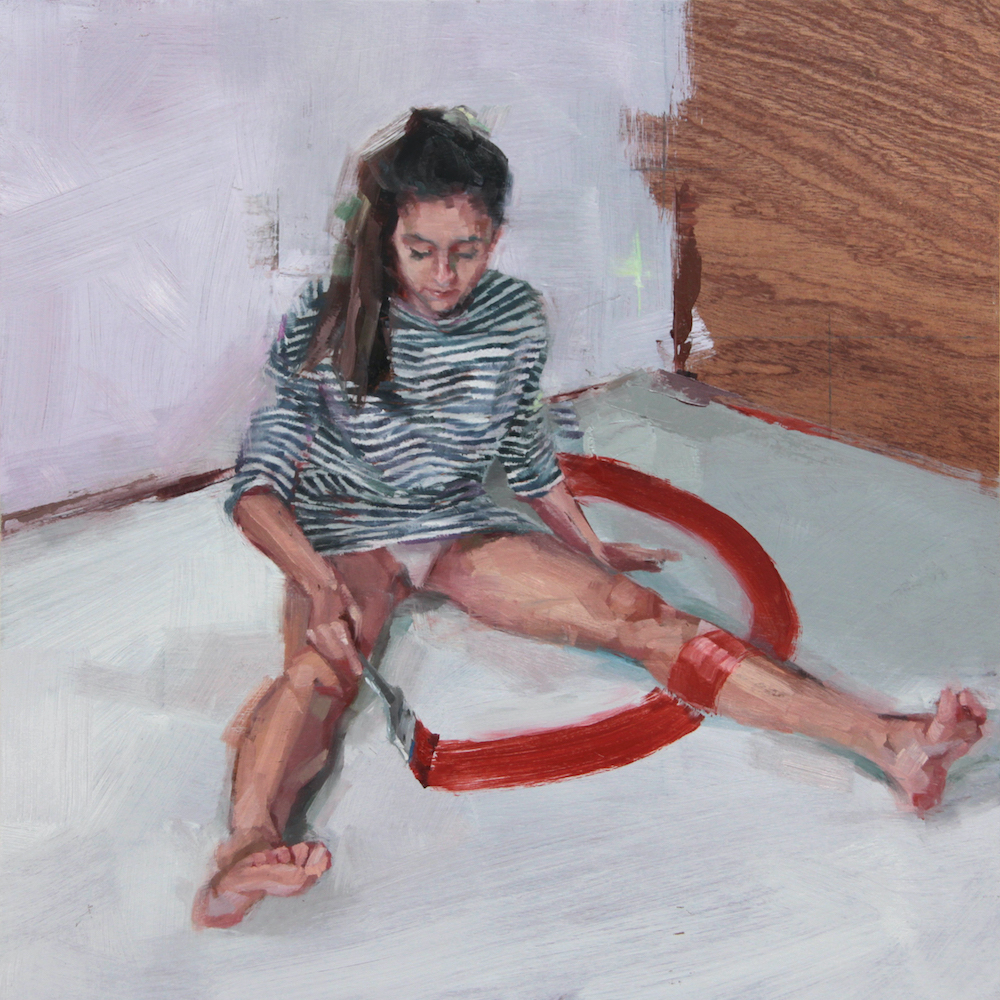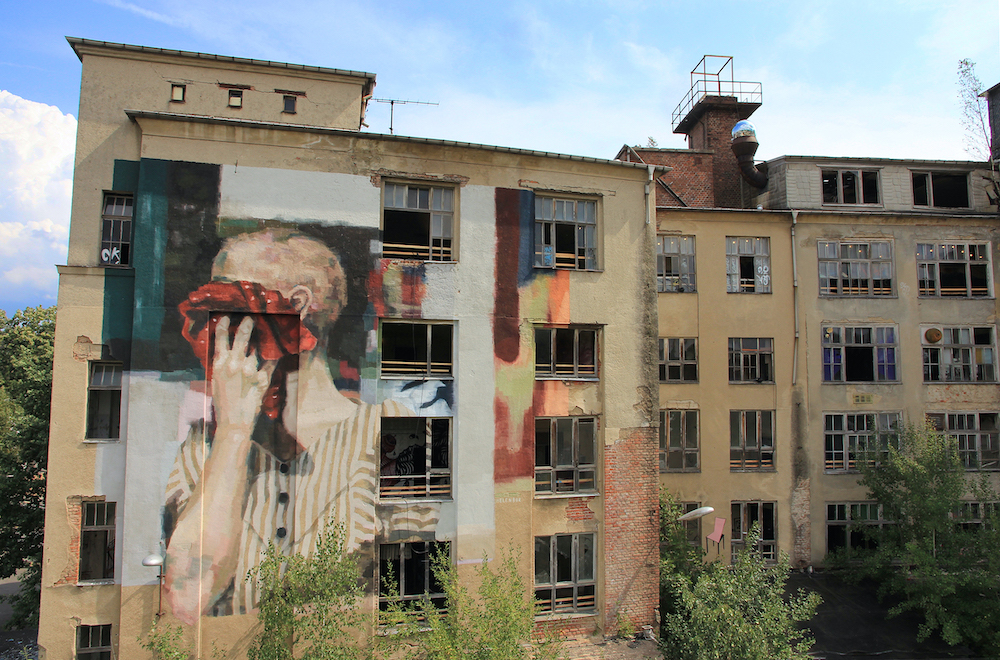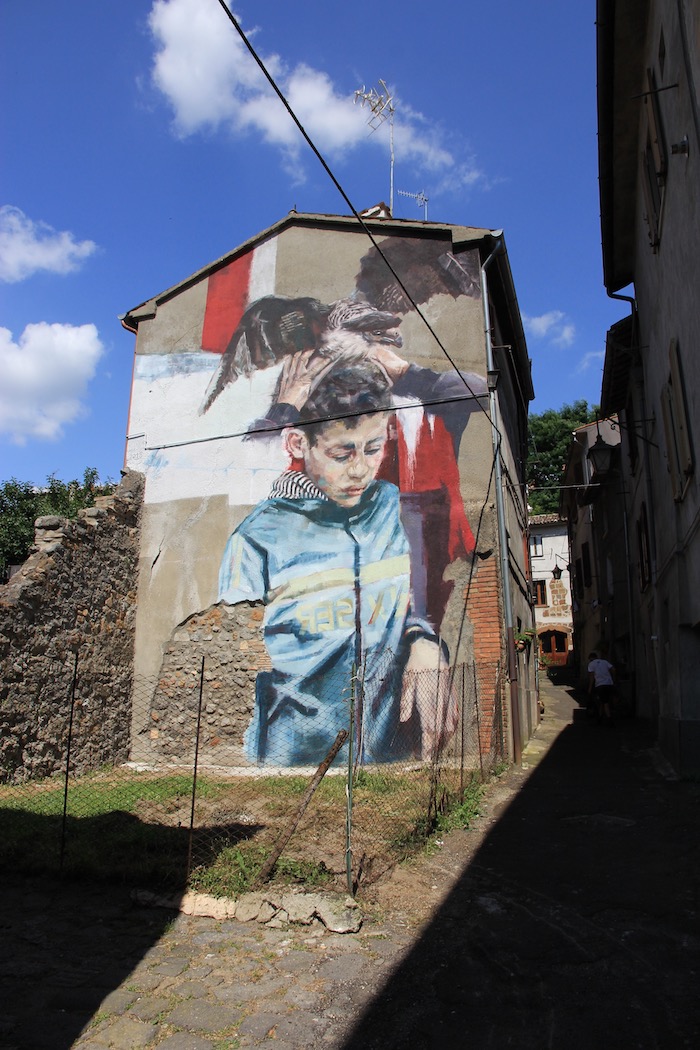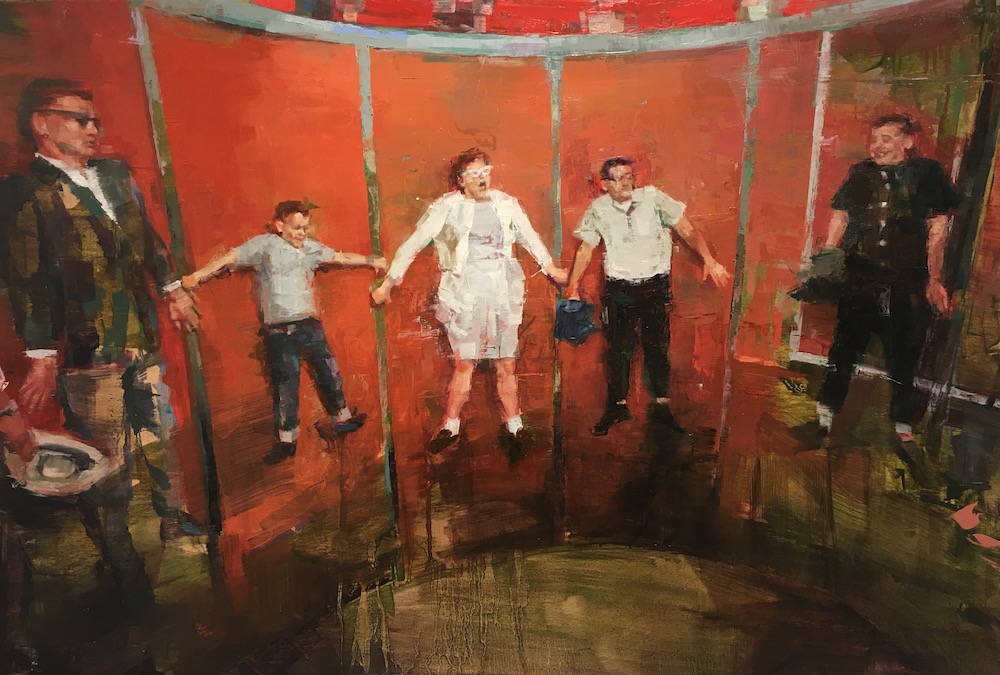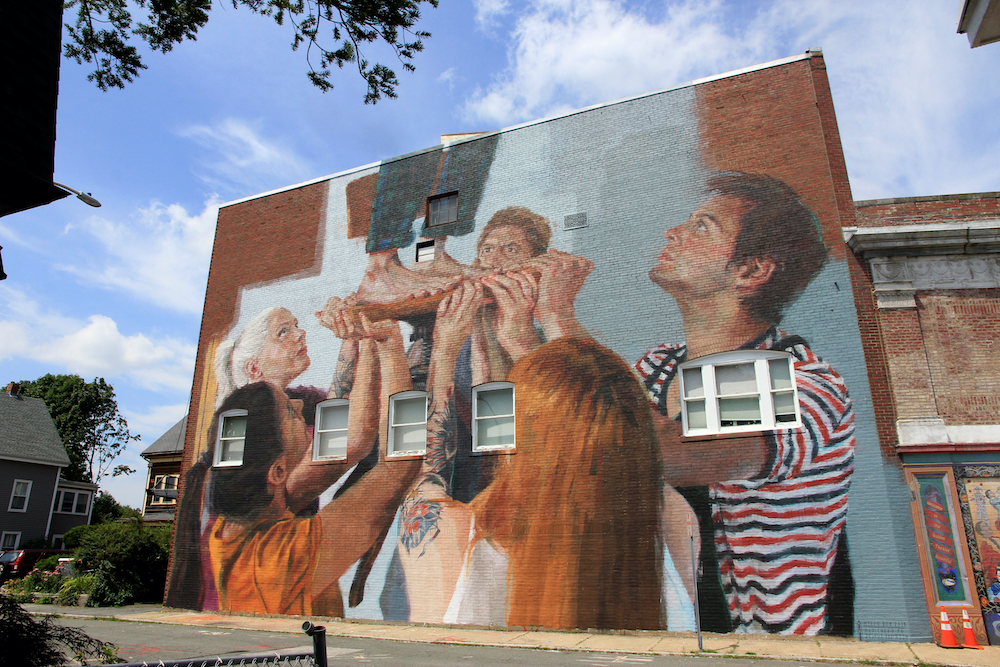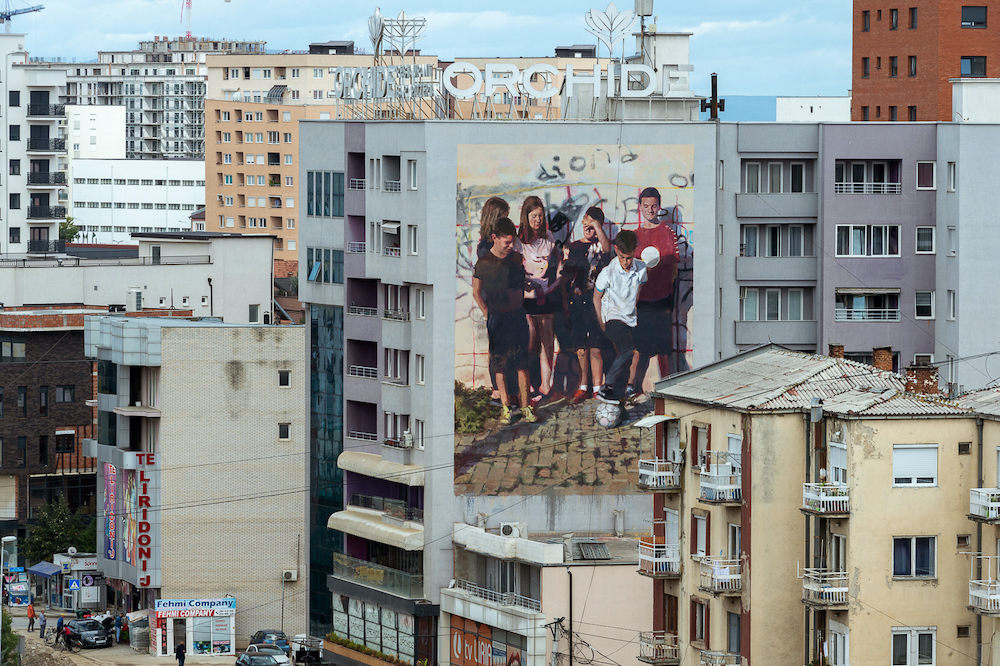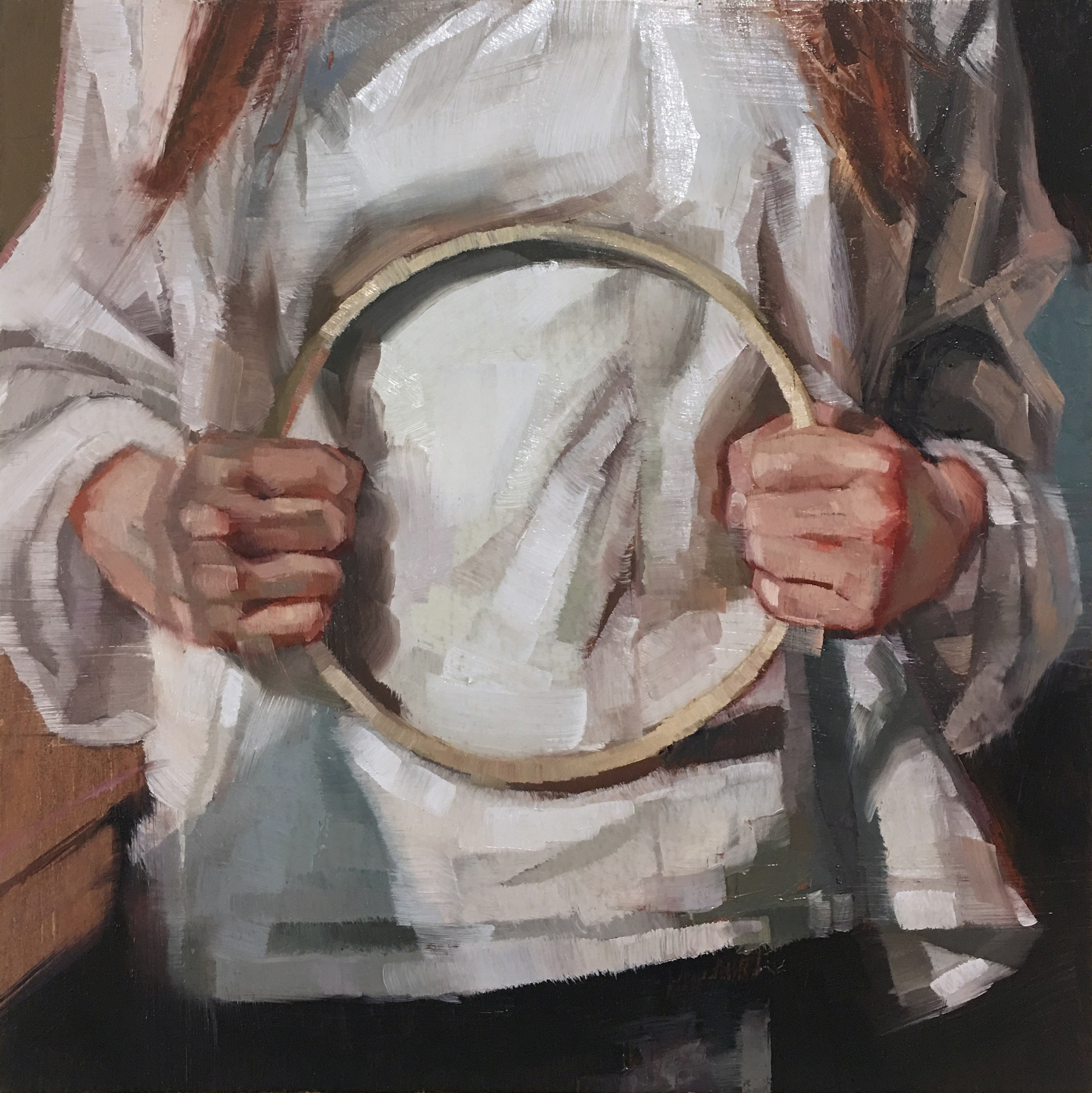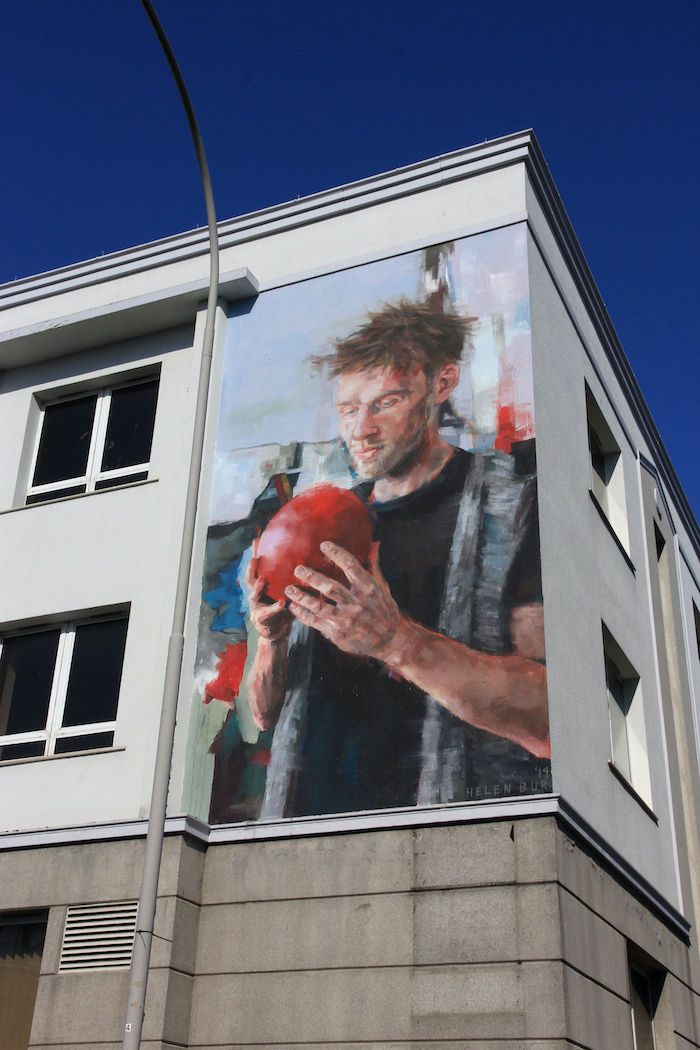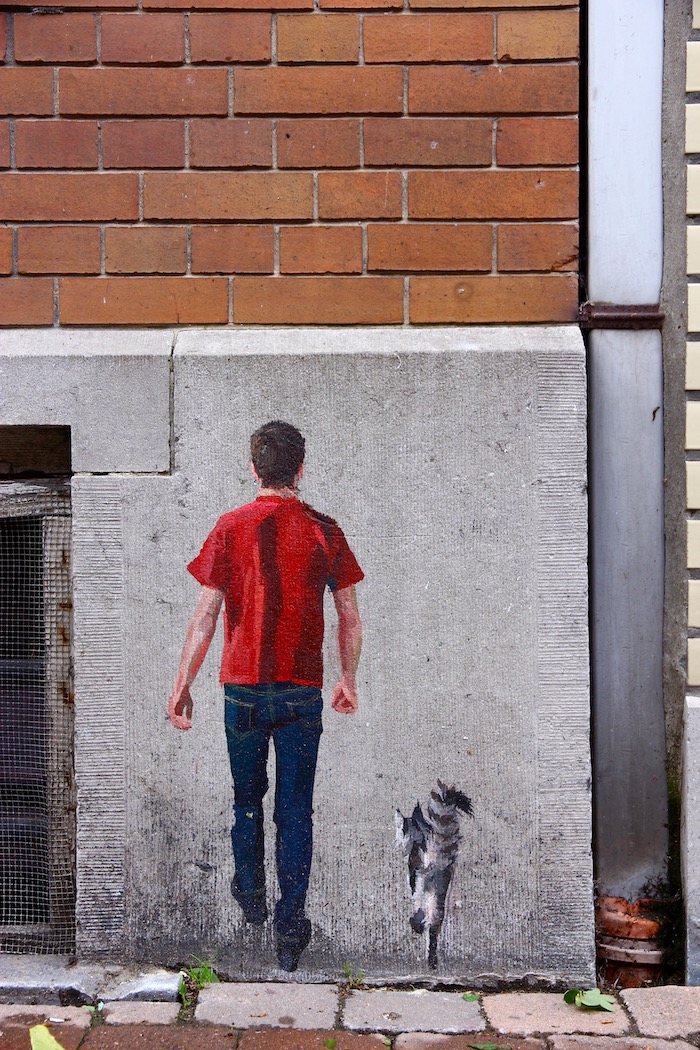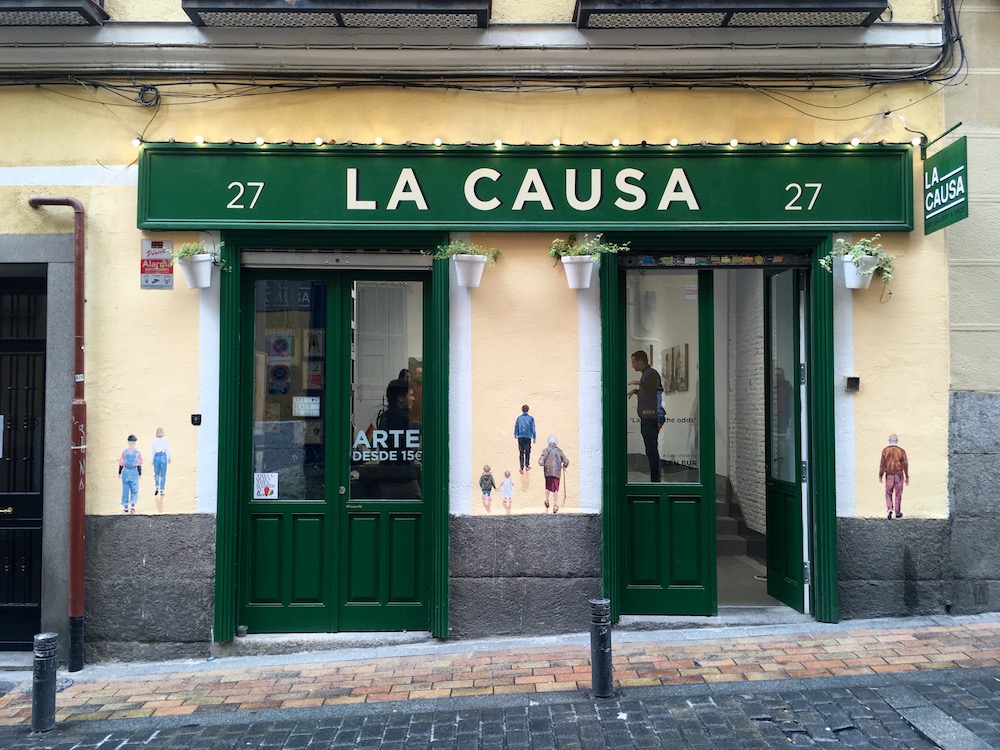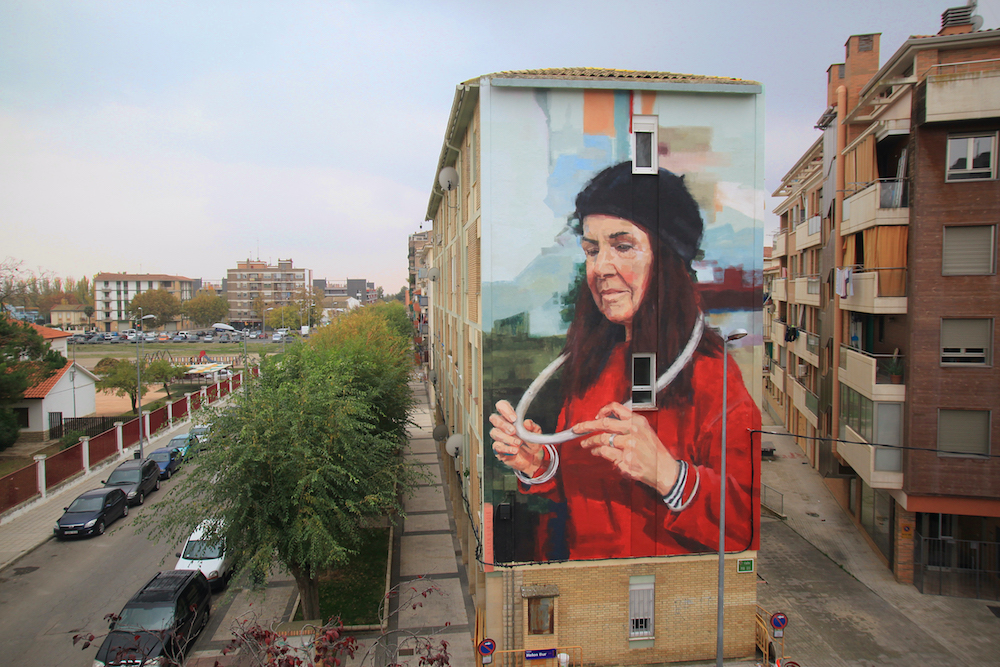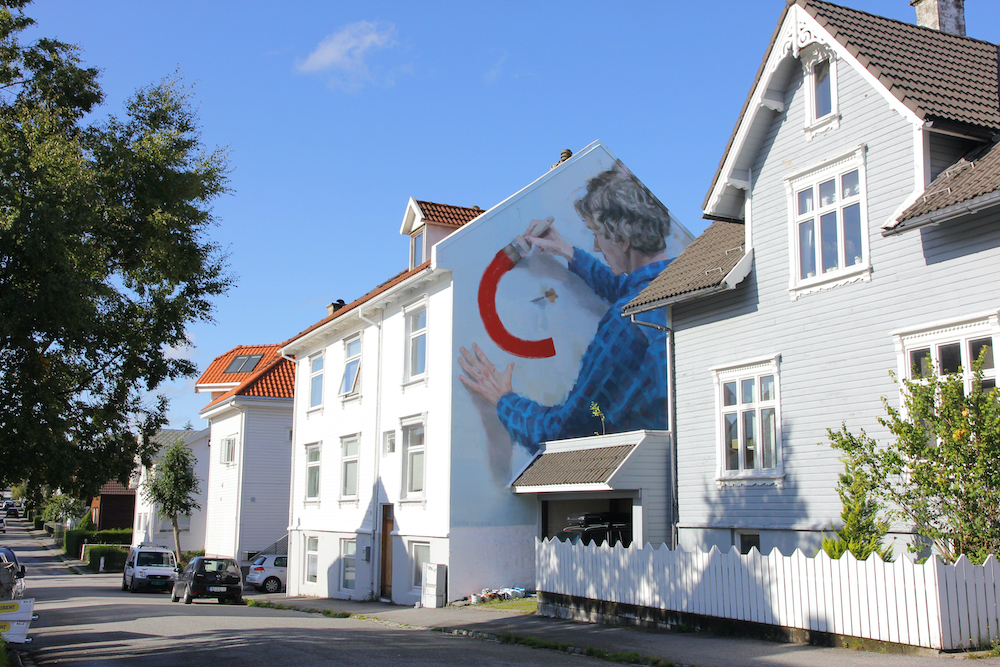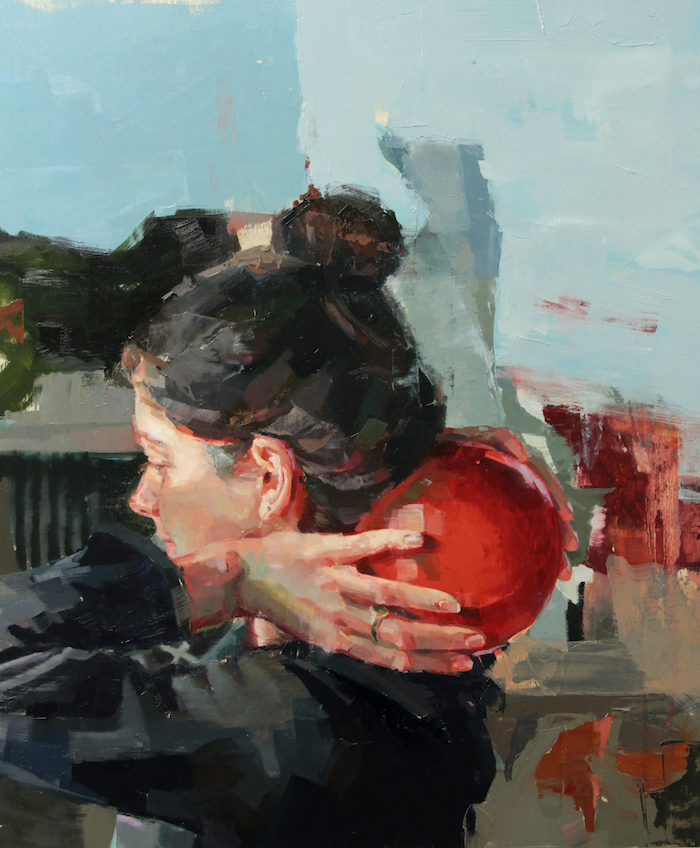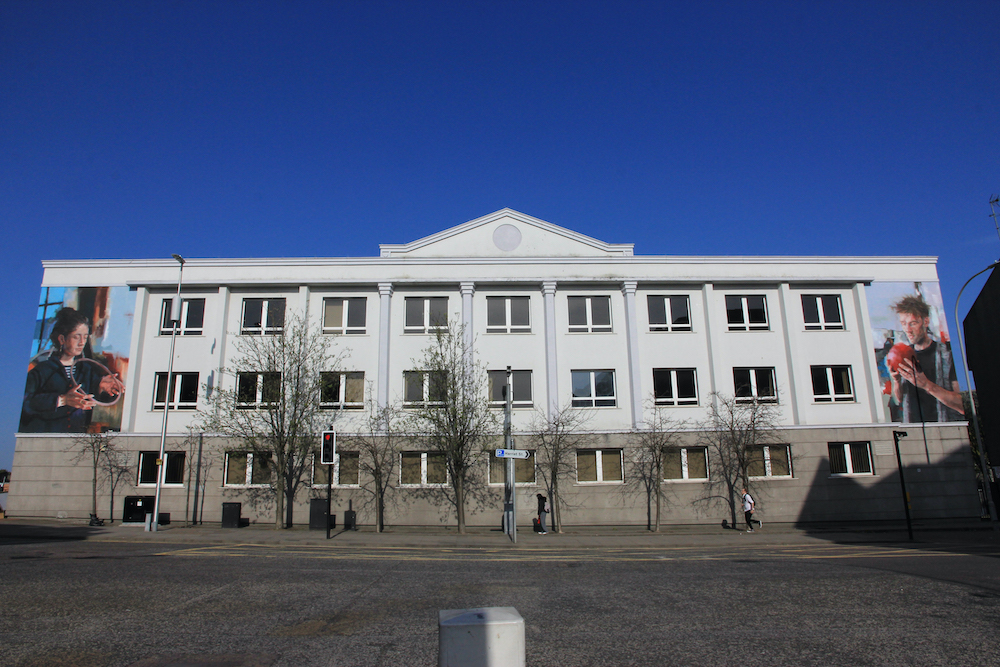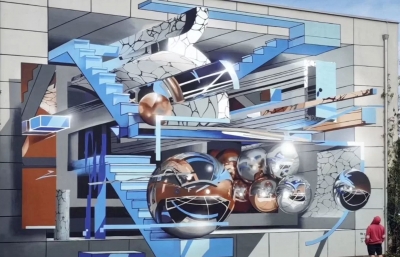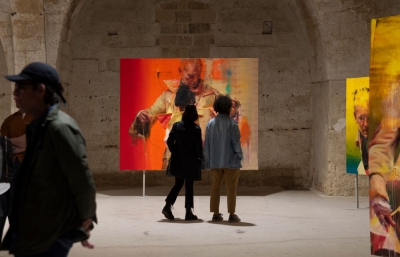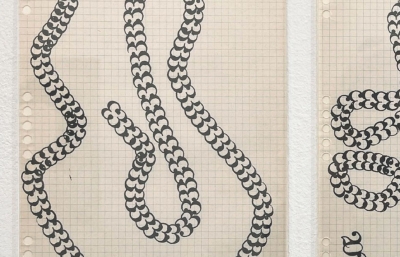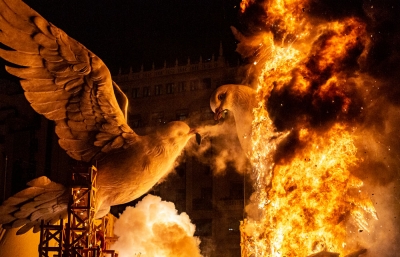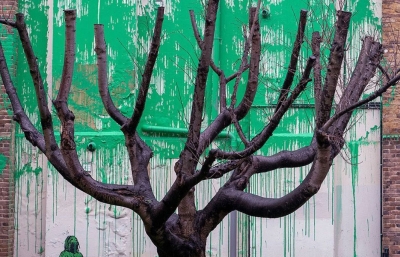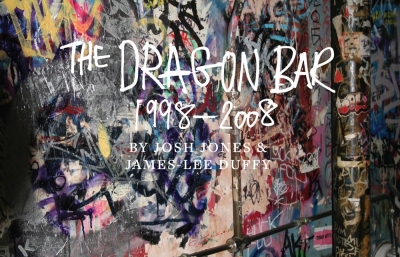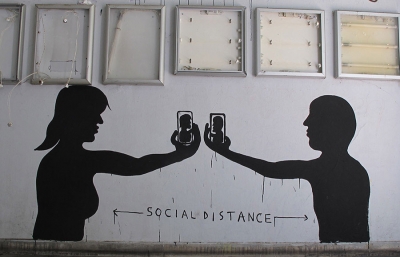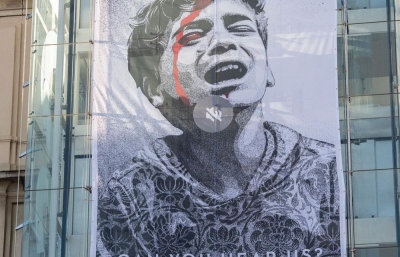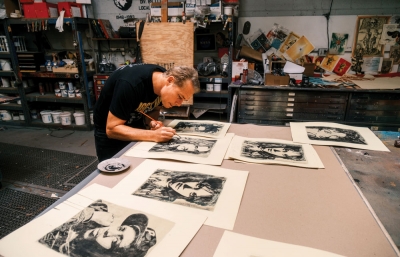Meeting Helen Bur at the Artscape mural festival in Sweden was memorable in itself. I had borrowed her 60-foot boom lift as we anticipated her arrival. The night she flew into town, as I handed over the keys, I asked if she needed a video projector to sketch her mural on the massive 4-story wall that awaited. The way she looked at me—with this wisdom her eyes carry—I might as well have asked if she painted with noodles instead of brushes. She wasn’t judging the use of projectors, or critical of the question, but she’s clearly a purist, a magician with no need for technical support. Purists don’t use projectors, but they do pack Swiss army knives.
Helen is one of the most powerful and resourceful muralists in the game. She paints like a new old master, one with a more humble and empathetic voice. We recently mused over all we took for granted back then, traveling the world and making monumental paintings alongside new friends. Her articulation of our recent global lockdown experience is a needed reminder, so poignantly true: “When you’re wrapped up in expecting one thing, then you’re thrown off the boat, treading water. You’re gently reminded never to take anything for granted, to adapt and accept the gift of the unexpected and how that grows you as a person.”
Kristin Farr: Is there a tension or difference you feel between your studio paintings and public murals?
Helen Bur: There is definitely a wavering tension created in the shift between these two spaces. The occupied space, the historic context and the awareness of who will be consuming the work each carry their influence. Leaving art school, you have this institutionalised and educated language. A canvas holds the whole history of art; almost everything that can be painted has been. That’s not the case with walls, you’re occupying a space in the sketchbook of the hoi polloi—everyone can doodle and consume regardless of language, but also everyone is talked to and visually impacted, whether they choose to be or not. Both spaces come with their own freedoms and to some extent, responsibility.
It’s a matter of treading carefully between creating poetic or provocative work without it becoming exclusionary. I’m always trying to bridge the gap of language so the work I create can exist across these two spaces; but I think that often means it carries a tension and becomes the misfit in either room.
How many murals have you painted, and what do you love most about painting in public?
Hmm, it must be a good pocket full or two by now… maybe around fifty or sixty, and with the littlest ones, somewhere in the hundreds.
The adrenalin and fresh air, the offerings, encounters, characters, insects, birds, sunsets from the top of the cherry picker—I really sound like a terrible romantic, huh? But it’s truly beautiful to be a street worker, surrounded by life, living. All things that are especially enticing right now in their impossibility as I sit in the UK’s third lockdown…
But it is terribly romantic. Painting outdoors is when I feel the most alive. I never see you working with assistants. It seems you are a lone wolf in your work?
It’s true, I’m a lone hedgehog most of the time. I think bringing someone else into the process, you have to really know what you’re doing, and half the time, I really don’t. Also I’m an only child, and perhaps with a fair dose of utilitarian, self-reliance flowing in the veins too. Though I recently worked on a wall with an artist and friend, Vlada Trocka, and we shared this kind of unspoken rhythm. It was such a treat, so perhaps it will change. Generally though, I’m quite happy alone!
It was impressive to see you painting in Ljusdal.
Aw, thank you—you too! I think I was on number four of back-to-back projects when I reached Sweden that time, so I was almost on auto-pilot! I still have my “Un-Fuck the World” T-shirt from Norra Station Gallery there, which seems to get more relevant by the day.
No kidding. What are your key tools for painting outdoors?
A little pump spray is something that was a bit of a game changer for me, strangely, especially in hot weather, to be able to keep everything wet—the wall, the brushes, the palette, so you can work the latex more like oil paint. Aside from that, the biggest brushes I can find, rollers, a chalk-line, lots of containers for mixing colours, a nice scrap of wood for a palette, gaffer tape and my trusty Swiss army knife.
Talk about the balance of realism and abstraction that you look for. When does the balance feel right?
This is one of the eternal beautiful battles of painting. I have such a long way to get to where I want with it. The work is currently fairly narrative driven, so it’s about retaining that whilst also pushing the language of the material itself. One of the painters I am in love with is Cecily Brown. You really have to work to find the figures lost in the paint, it’s almost like those magic eye books! Right now I'm in this purgatory between learning and unlearning the language of realism, always trying to loosen up, always accidentally overworking. Anyone can paint a finger with enough strokes, but the holy grail is to paint it with one.
Talk about the circle, the hoop. What does this signature symbolize for you or others?
The circle is this wonderful symbol that holds a real fist full of symbolic meaning in different cultures; on the one hand, it’s wholeness, oneness, totality, eternity, perfection. And on the other hand, it’s repetition, constriction, confinement. So, broadly, it holds this duality and polarity that have always dominated the themes in my work.
I also love how it simply interrupts the image. I try to intentionally depart far enough away from a natural situation that it sits on this sort of pre-surrealistic armchair. Like a little glitch of an uncomfortable or unpalatable thought, and how it might look if you could embody it.
It’s enlightening to think about how you are portraying unsaid feelings. How do you find your subjects? Are they often real people, or amalgamations of those you meet or see?
They are always real (as far as I know!) Friends, family, whoever is around me at a specific time. Usually, the concept is coincidental to the person, and the figures are mostly intended to be universal, symbolic, rather than a portrait of the sitter.
How was your 2020? Where did you stay most of the time, and what’s been your latest subject of interest?
For the first half of 2020, my home was where I've been based for the last couple of years—the Warehouse community in North London, UK. It was a house with a cat, a dog and 12 people, with a wide range of ages, interests, professions, etc. So I've sort of been constantly surrounded by people and had this wonderful insight into communal living, the dynamics of how different people live, feel, function and relate with each other. The dial turned up to 10 when lockdown happened. In turn, these people, isolation, reflected against the wider socio-political context, all very much became my subject matter. I’ve also had some big changes in my personal life that of course have found their way into the painting too.
I almost got on a plane to Australia in March just before the first lockdown, but that was cancelled, along with a string of other projects—same story for lots of other artists, performers and musicians, of course. I adore the travel, but I suppose when you’re wrapped up in expecting one thing, then you’re thrown off the boat, treading water. You’re gently reminded never to take anything for granted, to adapt and accept the gift of the unexpected and how that grows you as a person. Overall, I’ve felt very lucky to have the space and capacity to keep making in the studio.
I also have been working with Void Projects, we organized Home Mural Fest during the first lockdown, and managed a trip to Kosovo to reunite and collaborate. Keeping that artist community was cardinal.
Tell me about the Empty Walls festival.
I co-directed Empty Walls with my great friend, collaborator and artist Erin Holly when we were both quite fresh out of art school in Cardiff, Wales. We were also running this big community art space called The Abacus in an old bus office, whilst working in a music bar at night to pay the rent. It was such a crazy time. But, basically, we invited our favorite artists to come and paint some walls; Hyuro, Phlegm, David De La Mano, Kera, Run, Zed One, Jo¥, Russ and more all came and slept on our sofa. I was so young and in awe, and did the whole thing with so little money and experience, but it was such an eye opener and so humbling. I really have a lot to thank them all for.
What’s in progress in your studio right now?
Right now I’m working on paintings for a solo show coming up at Saatchi Gallery in London, which was postponed from last November to March, and could potentially be postponed again. It’s providing a great dangling carrot for now, regardless!
What and where is the next mural you hope to be painting?
I’ll be painting in Madrid for Urvanity in May. I hope to create a piece that celebrates female strength, defiance and unity as a little personal tribute to the late and much-loved beautiful soul and incredible artist, Tamara Djurovic [AKA Hyuro].
Originally published in our Spring 2021 Quarterly edition

